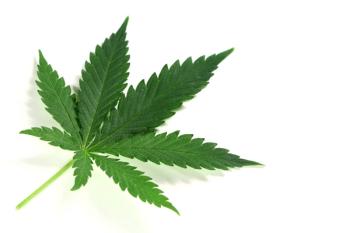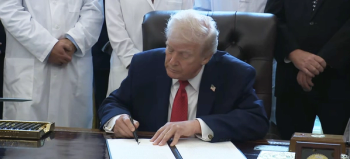
Cannabis Science and Technology
- March 2022
- Volume 5
- Issue 2
- Pages: 24-27
High Five: Cannabis Science and Technology® Celebrates 5th Anniversary
Let’s check back in with some of our top authors over the years to get their insight on how their articles resonated with readers and where the cannabis industry is headed.
This issue officially marks the 5th anniversary since the launch of Cannabis Science and Technology®! It’s often said that this industry moves at lightning speed. We have seen a lot of things change during the last five years: increased legalization across the US and other countries; higher scrutiny on product quality and consistency; and moves toward creating uniform testing standards and best practices. While there is still a long way to go in many of these areas in the cannabis industry, we thought it would be fun to look back at some of our High Five’s from the last 5 years. We also checked back in with some of our top authors to get their insight on how their articles resonated with readers and where the cannabis industry is headed. Below we hear from:
- Laura Breit, MS, PE, LEED AP, Managing Principal and CEO, ColeBreit Engineering, author of “
Understanding VPD and Transpiration Rates for Cannabis Cultivation Operations ” - Bob Clifford, PhD, General Manager of Shimadzu Scientific Instruments, author of “
Starting a QC Cannabis or Hemp Laboratory: Testing Requirements, Initial Expenses, and ROI ” - Josh Crossney, Director of Cannabis Events, MJH Life Sciences, author of “
’Amazon’ John Easterling and Olivia Newton-John-Plant Medicine: A Personal Healing Journey ” - Lo Friesen, Founder and CEO, HeyLo Cannabis, author of “
The Evolution of Ethanol Extraction Methods in Cannabis ”
Can you tell us what prompted you to submit your article to Cannabis Science and Technology®?
Laura Breit: We were continuing to deal with misconceptions amongst our clients regarding transpiration rates, especially that the transpiration of cannabis plants will affect the relative humidity within a grow room.
Bob Clifford: Science is about research, development, and communicating the information for further advancement in an efficient manner. With the large and focused circulation of Cannabis Science and Technology®, it appeared to be the most appropriate vehicle to achieving this goal.
Josh Crossney: When I first heard Amazon John Easterling and Olivia Newton-John’s personal healing journey, I was simply amazed. It is a journey far more beautiful and exciting than any tale that I have ever heard. It is a true story that involves everything from the search for the lost cities of gold, Rocky Mountain Spotted Fever, and identifying the true treasures of the rainforest, to ayahuasca visions, full spectrum cannabis tinctures and, most importantly, finding true love and growing stronger together. Amazon John’s “bioharmonic tonic” is a very unique product in the cannabis industry—a blend of probiotic microbes that increase plant growth and yield in a very natural way. It is Amazon John’s rich history of “lost knowledge” learned from the rainforest and his journey with Olivia that I felt must be shared with Cannabis Science Conference attendees.
Lo Friesen: Cannabis Science and Technology®(CST) has the readership that is looking for more technical information on cannabis extraction and refinement process and methodology. I regularly write for CST as it is a great fit for the technical articles that I enjoy writing.
Why do you think your article resonated so well with our readers?
Laura Breit: Vapor pressure deficit and transpiration rates are known to affect the growth of plants, but the understanding of why wasn’t clear to many. It’s critical to understand this concept to ensure the environment is appropriately controlled for effective plant growth.
Bob Clifford: Although cannabis has been around for 10,000 years, the laws and regulations related to cannabis have changed and continue to change. This created an emerging market and, with it, a demand for knowledge on many levels, including how to set up and run a profitable laboratory.
Josh Crossney: Firstly, I think everyone knows and admires Olivia Newton-John. She is loved around the world and her beautiful voice brings happiness to all. In this regard, she is a healer that has helped the entire world. I believe CST readers want to know more about her personal journey with cannabis. Also, while we have learned so much about cannabis, we really have only just begun to understand, as Amazon John says, “how cannabis interfaces with our physiology and initiates healing responses.”
Lo Friesen: Ethanol extraction continues to expand as a leading extraction method in the cannabis industry. As more states legalize cannabis and hemp, the amount of cannabis biomass on the market is multiplying. As operators plan to enter the industry or look for ways to preserve their harvest, ethanol extraction is a relatively easy solution that scales very quickly. This article is a great starting point for anyone interested in ethanol extraction for their business.
Do you think the industry has a better understanding of the topic you covered now or is more education still needed?
Laura Breit: While we are seeing that the industry is maturing, there is always room for more education.
Bob Clifford: The industry has certainly become more educated over time. In the early stages, there were investors who thought that you could just buy laboratory equipment for cannabis analysis and cash in on the riches. Not understanding how to run a lab efficiently and in accordance with applicable regulations resulted in some bad characters falsifying data. Most of those labs are now out of business and the honest, knowledgeable, and profitable ones remain.
Josh Crossney: I think Amazon John and Olivia’s journey is a very personal and unique one that not many people were aware of. Olivia shared her thoughts on how cannabis tinctures helped her with sleep, stress, and pain, and she clearly articulated her opinion that cannabis “should be encouraged for everyone who is in pain to reduce or eliminate opiates.” I do believe that Amazon John’s bioharmonic tonic results in happier, healthier plants that, in turn, produce healthier, natural remedies. More research is needed here. I am fascinated by the way Amazon John uses gemstone harmonics to activate the full power of microbes, and I think academic researchers need to look closer at his products and investigate the mechanisms and cellular processes involved.
Lo Friesen: This article offers a broad foundation for readers to understand how ethanol has been used for extraction in the past, how it is currently used, and potential future improvements to the process. I believe there is an opportunity for more education, but this is a good foundation.
How do you think the cannabis industry has changed since 2018?
Laura Breit: The industry is becoming more commoditized, there is more specialization, and cannabis is generally more accepted.
Bob Clifford: The recent emerging market of cannabis became popular because of the easing of laws as well as the anecdotal evidence of its medicinal value. People who self-medicate and patients use different chemovars to treat the same condition with varied results because of inconsistencies in the products. There are 500-plus compounds in cannabis. Making products that are more similar will improve the reproducibility of the effect. Thus, analytical testing will increase as new products and delivery systems are developed for inhalation, ingestion, oral absorption, and topical.
Josh Crossney: Overall cannabis has changed from illegal to essential. While we have all come a long way in fighting the undue stigma placed on this plant, we still have a very long way to go. Most academic researchers still do not have access to quality cannabis samples. If people do not continue to stand up and fight for their rights, it could all be taken away in a heartbeat. One negative thing that has happened since 2018 is that the adult use or “recreational” market has eclipsed the medical programs. Breeding plants to be high in THC reduces the potential therapeutic benefits from the other cannabinoids, and I would like to see a stronger focus on full-spectrum products as well as investigations into the health benefits of the more esoteric cannabinoids (and terpenes, bioflavonoids, and so on). Cannabis is used to combat anxiety and stress, and that makes it the most powerful medicine on the planet. But there is so much more to cannabis than just THC. We must all work to move science forward and learn from the plant rather than exploit it.
Lo Friesen: Since 2018, cannabis has been legalized for recreational use in nine states. This has been hugely impactful in creating access to regulated cannabis, opportunity for entrepreneurs in this industry, and many jobs. The industry has also ramped up access to education for new and veteran cannabis consumers, which empowers consumers to find the right products for their needs. All of this has helped the cannabis movement impart change on more than just the cannabis industry. The cannabis industry is calling to action racial and gender diversity in business leadership and ownership, helping liberate those incarcerated for marijuana offenses, and consumer safety with regulated products.
What do you hope to see happen in the cannabis industry in the next 5 years?
Laura Breit: We hope that federal legalization opens up financing options, which will ensure that utilizing efficient HVAC systems will become easier to utilize when designing and constructing purpose-built cannabis facilities.
Bob Clifford: Within the next 5 years, cannabis will be legal and there will be federal oversight for labeling and contamination. For quality control (QC) testing labs looking to engage in interstate commerce, the federal regulation will make it much easier as the states will no longer have different laws. As a result, some of the larger laboratories will consume some of the smaller ones.
Josh Crossney: I hope to see continued growth, advancing science, more doctors educated on the function of the endocannabinoid system and all cannabis related jail sentences commuted. I’d like to see more diversity in the cannabis industry. The lack of diversity at some cannabis companies and conferences is alarming. Amazon John leaves readers with a perplexing thought at the end of his interview . . . “What if cannabis itself, when the population reaches a certain density, also has a quorum signaling trigger that initiates chemical signaling communication between the thousands of cannabis gardens everywhere? Maybe we’ve reached that 'trigger' and that would account for the tsunami of change we’re seeing in the cannabis world as humans carry out the directive of the cannabis initiators.” We could sure use a tsunami of (positive) change right now!
Lo Friesen: I hope to see:
- Solutions implemented for the inequities that are and are not already being addressed
- More states legalize cannabis and regulations founded in science prioritizing consumer safety
- Consumers seeking out educational resources to empower them, which goes hand in hand with the growth of the conscious consumer
Closing
It’s been an exciting start for Cannabis Science and Technology® during the last 5 years and we are thrilled to continue our mission of advancing research, quality, and education in the industry. Please join us in celebrating what we’ve all accomplished thus far and what we hope to achieve in the future!
Articles in this issue
almost 4 years ago
Solventless Extracts: An Overviewalmost 4 years ago
More Innovative Cannabis Products Emerge Amidst Ongoing Processor Issuesalmost 4 years ago
Five Factors to Inform a Well-Grounded Growing Media DecisionNewsletter
Unlock the latest breakthroughs in cannabis science—subscribe now to get expert insights, research, and industry updates delivered to your inbox.




